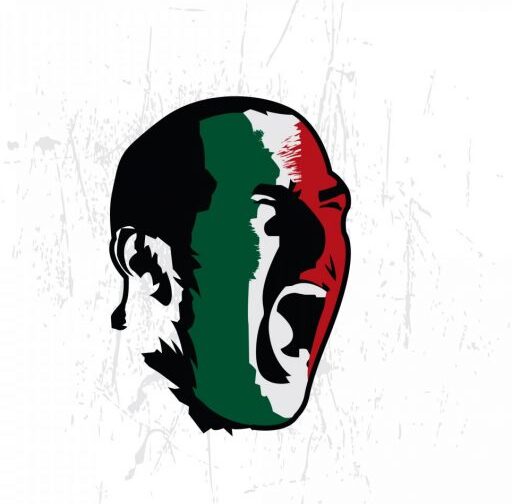May 27, 1964, in Vienna became the place of a memorable baton pass, when la Grande Inter defeated the European Cup’s greatest side.
Inter’s victory at the Praterstadion was the consecration of the revolutionary catenaccio style, and the coronation of their genius coach Helenio Herrera.
The Argentine coach had arrived from Barcelona four years prior — facing the same Real Madrid side that had cost him his job, when Los Blancos had ousted him in the 1960 European Cup semi-finals — and installed a new philosophy of play that swept Italy and Europe alike. With the five successive European Cups that had sat Real Madrid’s hegemony, the 1964 final anointed Herrera’s catenaccio as the new dominant force in Europe.
With the final in Vienna, Inter fans traveled in droves to Austria to watch their team. Thousands of Italian supporters comprised a large part of the 71,333 in attendance. What ensued was a convincing 3-1 win for the Nerazzurri, topping off an impressive European run that had crowned them champions — the first team to win the European Cup without losing a game.
It all started on September 18, 1963, at Goodison Park. Inter edged the English champions 1-0 on aggregate. Inter then caught fire after that timid start at Merseyside, eliminating Monaco and Partizan Belgrade, each 4-1 on aggregate.
Inter reached their apogee in the semi-finals, beating an impressive Borussia Dortmund side 4-2 on aggregate. The Nerazzurri tied 2-2 in Germany, and then won 2-0 back at the Stadio Meazza.
[youtube]http://youtu.be/Im16w3wcJFg[/youtube]
Inter’s star man was Sandro Mazzola, who had already scored five goals (including one in each leg against Dortmund) on the way to the final. Alongside him were midfield general Luis Suarez — who had followed Herrera from Barcelona — and wing duo Mario Corso and Jair.
The cornerstone of Herrera’s catenaccio was the defence of course. Libero and captain Armando Picchi was the back-line’s lynchpin. However, the defence’s star man was unquestionably left wing-back Giacinto Facchetti, whose marauding runs and eye for goal were critical assets to Herrera’s counter-attacking system.
Against Real Madrid and the competition’s top-scorer Ferenc Puskas, legend Alfredo Di Stefano and wing wizard Francisco Gento, la Grande Inter asserted themselves as Italy and Europe’s greatest defence 20 years before AC Milan’s famed back-line ever came to be.
Although Di Stefano and co. were ageing, they still remained a feared trio and had scored 15 goals between them en route to the final.
But Herrera’s catenaccio stifled Di Stefano, shackled Gento and blunted Puskas. Felo was Real Madrid’s only scorer, his goal coming on 70 minutes from a Puskas corner and only proving mere consolation. Puskas himself came closest when he struck the woodwork.
During the game, Suarez ran the midfield as a Mazzola brace (on 43 and 76 minutes) and an Aurelio Milani goal (on 61 minutes) sealed an emphatic 3-1 win.
[youtube]https://youtu.be/WIHXTTYlZzg[/youtube]
Catenaccio had introduced itself to the world, beating Europe’s biggest bogeyman in the process. Herrera had put Italian football on the map, despite even AC Milan’s success the year prior.
Herrera’s catenaccio and its influence have unfortunately painted a negative image of Italian football ever since, due to its defensive nature and minimalist approach. Erroneously though — or just lazily perhaps — observers failed to recognize that Herrera’s catenaccio was more than met the eye.
Firstly, It was a more flexible and fluid version of Karl Rappan’s hyper defensive verrou (bolt) system. Moreover Inter’s counter-attacking schemas, in their focus on attacking space, were precursors to Rinus Michel’s totaalvoetbal (Total Football) at Ajax. Finally, the modern interpretation of Facchetti’s wing-back role even inspired Franz Beckenbauer. In his revolution of the libero role, the German icon looked to perform Facchetti’s role from the middle of the pitch — as opposed to from out wide — and thus benefit from the whole panorama of the field ahead of him in doing so.
More importantly however, la Grande Inter’s 1964 victory engendered a rarely replicated paradigm shift. For the first time, the cult of personality of the coach was born. Indeed Herrera was the Jose Mourinho of football before Mourinho ever became English football’s new Brian Clough.
Unlike what was often referred to as ‘”Di Stefano’s Real Madrid,” it was “Herrera’s Inter” that supplanted the idolatry of the superstar player, as the coach came to the foreground and collected most of the credit for his team’s performances.
For the man they called Il Mago (the magician), this was Herrera’s greatest trick; and possibly even over his European exploit on that fated night in Vienna.







